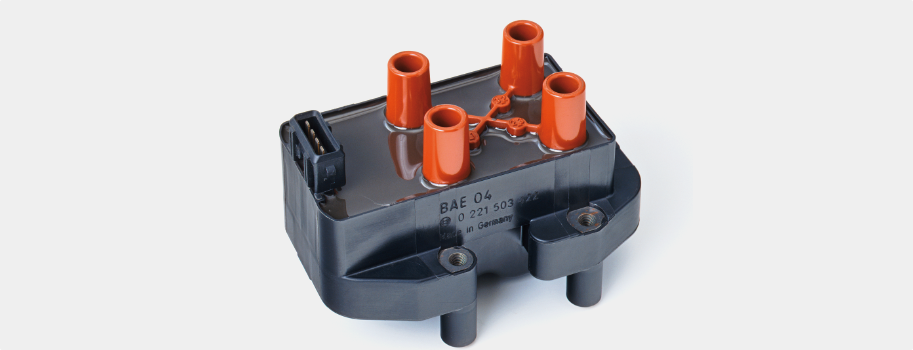Application notes: examples
Plasma activation
Medical Technology: Needles
Steel needles have to be bonded to syringe hubs with high tensile strength to eliminate the risk of needle detachment during application. To achieve the desired bond strength, the polyethylene hubs are pretreated (activated) in plasma. Since plasma is gaseous, treating the interior of the hub is no problem.
Read more: Medical technology: Needles, PDF 196 KBChipcard production
A chipcard’s quality and service life depend essentially on the adhesion of the modules to the chipcard. If the adhesion is too weak, the module may detach itself from the chipcard, e.g. when strongly flexed, making the card unusable. To prevent this and to achieve optimal adhesion of the hotmelt bond, the modules are activated in plasma before bonding.
Read more: Chipcard production, PDF 202 KBDental medicine technology
Quality standards concerning function and life span are extremely high in medicine technology. Especially the repeated sterilization procedures put a strain on the materials. Particularly hot-steam sterilization leads to degradation of the polymer surfaces. Adhesive compounds and lacquers are attacked hard in the process and lose their adhesion quality after several hot-steamtreatments, so that important parts of the functionality are going lost. The aim of a plasma treatment is to clearly increase the adhesion between the polymer workpiece and adhesives and lacquers respectively.
Read more: Dentist drill module, PDF 163 KBDrill hole cleaning
Textured polymer films, like those used in ink jet printer cartridges, for example, are manufactured by applying a laser as a drilling and cutting tool. As an unwanted side effect, some of the incineration ash remains on the film around the textures. The primary aim of the plasma treatment is to remove this ash, which sticks more or less firmly to the surface.
Read more: Drill hole cleaning, PDF 89 KBCar electrics: ignition coil manufacturing
In the automotive industry, quality standards regarding function and endurance are very high. Critical components for the operation of the engine must be long-life even at extreme conditions. Ignition coils, in addition, handle high voltages and therefore are highly sensitive to humidity. Protection of the electrical components is achieved by potting, i.e. enclosure in a cup filling all gaps between cup and active parts with resin. Adherence between resin and all components is crucial. That is why plasma treatment is conducted before potting.
Read more: Car electrics: ignition coil manufacturing, PDF 126 KBPlasma cleaning
Chipcard production
A chipcard’s quality and service life depend essentially on the adhesion of the modules to the chipcard. If the adhesion is too weak, the module may detach itself from the chipcard, e.g. when strongly flexed, making the card unusable. To prevent this and to achieve optimal adhesion of the hotmelt bond, the modules are activated in plasma before bonding.
Read more: Chipcard production, PDF 202 KBLeadframe treatment
For sufficient adhesion of the bond wires and chips to leadframes, the surface has to be as clean as possible. Adhesion is dramatically reduced by organic contamination and often prevents achievement of the desired adhesion quality. Because of the uneven contamination, leadframes have to be cleaned in their entirety. The process of low-pressure plasma cleaning is particularly suited to this, as fully loaded leadframe magazines can be cleaned without difficulty thanks to plasma’s high mobility.
Read more: Leadframe treatment, PDF 218 KBPlasma cleaning of indicator bulbs
Indicator bulbs, which are still being used by automotive manufacturers, often have to be coated since the grooved diffusion glass of the indicators is colorless for both economic and optical reasons. The coating is applied in a dipping process. Durability of the coating depends on the adherence of the coating to the substrate. Even though contamination may only be as few as several µg/cm2, it reduces adherence considerably
Plasma cleaning of indicator bulbs, PDF 85 KBDrill hole cleaning
Textured polymer films, like those used in ink jet printer cartridges, for example, are manufactured by applying a laser as a drilling and cutting tool. As an unwanted side effect, some of the incineration ash remains on the film around the textures. The primary aim of the plasma treatment is to remove this ash, which sticks more or less firmly to the surface.
Read more: Drill hole cleaning, PDF 89 KBElectrical engineering: quality capacitors
The capacitors covered by this report consist of a metallized (e.g. with aluminium or zinc) polymer film which is wound up and pressed into the final form. Then wires are fixed at the front by melting aluminium powder and the capacitor is sealed with a synthetic cap. Bond strength of the aluminium powder is reduced by contamination. It can be removed by a plasma process, eliminating the bonding problem.
Read more: Electrical engineering: quality capacitors, PDF 96 KBPlasma etching
Photoresist stripping
During the manufacture of microelectronic devices, removal of photoresist layers very often is an inevitable process step. By isotropic strip processes with plasma, such removal of organic layers is possible without any plasma damage. As an experienced provider of low-pressure plasma systems for surface treatment, PINK also offers customized plasma systems for resist removal.
Read more: Photoresist stripping, PDF 87 KBHole etching in printed circuit board foils
Polymer foils are an important substrate for many industrial products. They are even used as basis for flexible printed circuit boards. First the foil gets embossed and then it is metallized. As embossing will not provide all kinds of structures (e.g. feed-through contacts) plasma etching is used to remove process-related remainders of the polymer foil before metallization.
Read more: Hole etching in printed circuit board foils, PDF 84 KB



